Common Misconceptions About Tyre Pressure
Tyre pressure is one of the simplest yet most misunderstood parts of car maintenance. Many drivers assume their tyres are “fine” as long as the car feels normal on the road, but tyre pressure plays a major role in safety, fuel efficiency, and the overall performance of the vehicle.
In the UAE, where temperatures rise sharply, roads are wide and fast, and long-distance highway driving is common, maintaining correct tyre pressure is even more important.
Yet, despite this, misconceptions continue to spread among drivers. Some of these misconceptions seem harmless but can lead to tyre damage, reduced braking ability, or even blowouts. This guide clears up the most common myths, explains the truth behind them, and helps you maintain your tyres the right way.
1. “I can tell tyre pressure just by looking at the tyre.”
This is one of the biggest misconceptions.
Why it’s wrong:
Modern radial tyres are designed to hold their shape even when under-inflated. A tyre may look completely normal from the outside but still be 20–30% below the recommended pressure.
Why it’s risky:
- Under-inflation increases tyre temperature
- It causes uneven wear
- It reduces fuel efficiency
- It weakens the tyre sidewalls
In UAE heat, an under-inflated tyre is more likely to experience a blowout, especially at highway speeds.
The truth:
You cannot visually judge tyre pressure.
A tyre gauge or TPMS reading is the only reliable method.
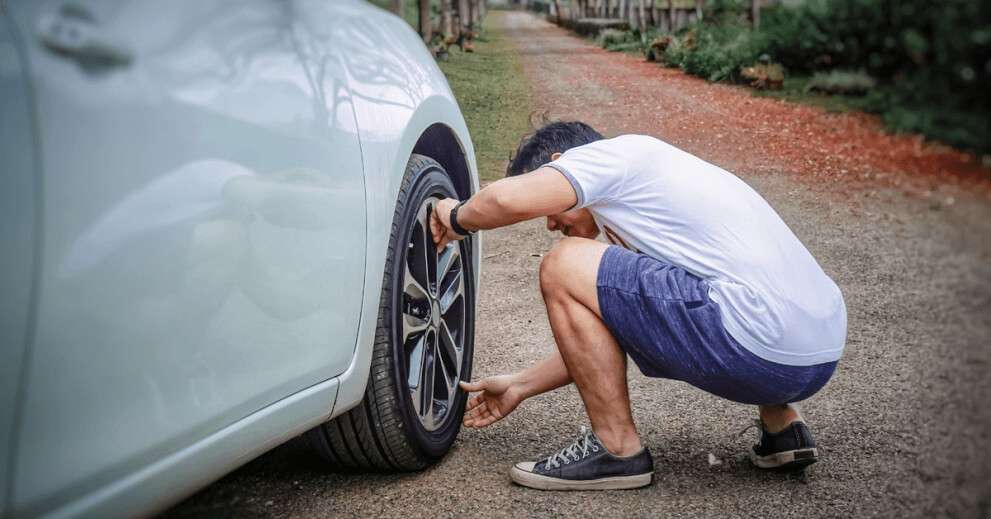
2. “Higher tyre pressure gives better fuel economy.”
Many drivers inflate their tyres above the recommended level, thinking it will reduce friction and improve fuel efficiency.
Why this is misleading:
Yes, over-inflation reduces rolling resistance, but it does so at the cost of safety and tyre life.
Risks of over-inflation:
- Smaller contact patch with the road
- Poor grip during braking
- Increased risk of sliding
- Harsh ride quality
- Faster wear in the centre of the tyre
In regions like Dubai and Abu Dhabi, sudden braking and roundabout handling become dangerous when tyres are over-inflated.
The truth:
Follow the manufacturer’s recommended pressure for optimal fuel efficiency and safety.
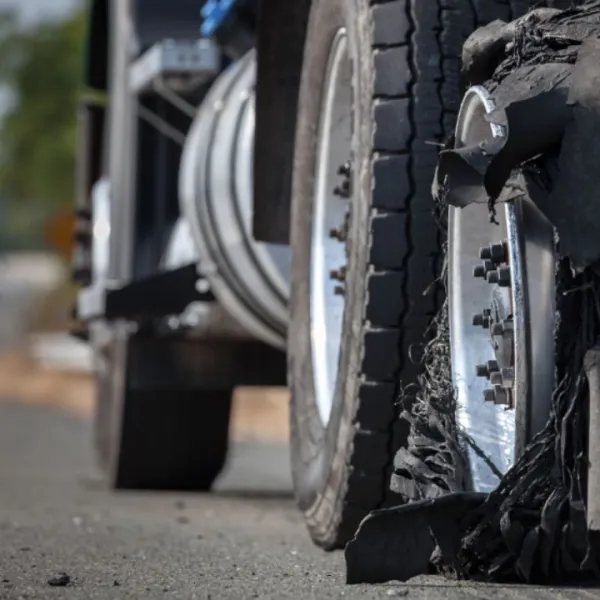
3. “Lower tyre pressure gives better traction on normal roads.”
This idea comes from off-roading culture. Desert drivers reduce tyre pressure to increase the surface contact, which is correct, but only for sand.
Why this is wrong for road driving:
Lower pressure on tarmac reduces the tyre’s stability.
It also causes flexing and heat buildup.
Risks of driving with low pressure on highways:
- Poor steering response
- Excessive heat buildup
- Sidewall damage
- High risk of blowouts
The truth:
Lower pressure is only for sand driving.
For everyday roads, stick to the recommended PSI.
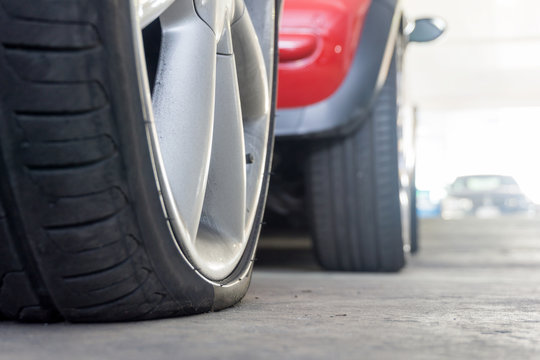
4. “The pressure written on the tyre is the correct pressure.”
Drivers often read the number on the tyre sidewall (such as 44 PSI) and assume this is the ideal pressure.
Why this is incorrect:
The number written on the tyre is the maximum pressure the tyre can handle, not the recommended pressure for your specific vehicle.
Your car’s manufacturer tests handling, braking, comfort, and load capacity to determine the correct pressure.
The truth:
The correct tyre pressure is printed on:
- your driver-side door frame
- the owner’s manual
- sometimes the fuel cap
These recommended values are what you should follow.

5. “Tyre pressure should stay the same throughout the year.”
In the UAE, temperatures fluctuate dramatically. A tyre loses or gains pressure depending on temperature changes.
Why this misconception is harmful:
Hot air expands.
Cold air contracts.
Even a 10°C difference can change the PSI by 1–2 units.
The UAE effect:
- In summer, pressure rises
- In winter mornings, pressure drops
- Midday heat increases readings again
The truth:
Check tyre pressure at least once every two to three weeks, and always check it when the tyres are cold.
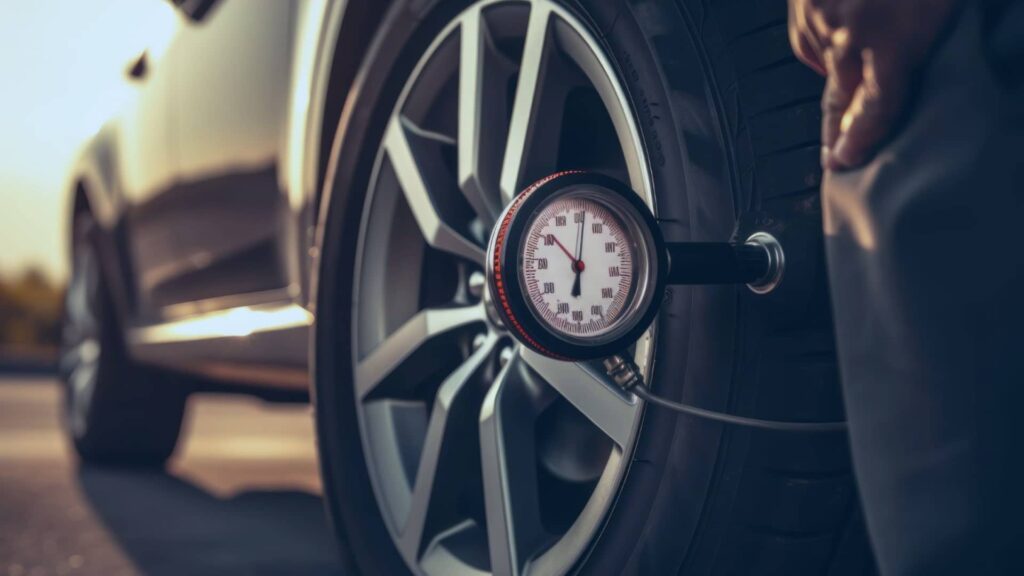
6. “New tyres don’t lose air.”
Even brand-new tyres lose air naturally over time.
Rubber is porous, and temperature shifts affect pressure.
Why this matters:
Drivers assume new tyres don’t need monitoring.
This leads to under-inflation without them realizing it.
The truth:
Every tyre new or old loses some pressure monthly. Regular checks are essential.
7. “If the TPMS light isn’t on, the tyre pressure is fine.”
TPMS (Tyre Pressure Monitoring System) is helpful, but it has limitations.
Why relying only on TPMS is risky:
- Some systems alert only when pressure drops 25% below the ideal level
- This means your tyre can still be under-inflated without warning
- TPMS sensors may malfunction, especially in heat
- Battery-powered sensors eventually fail
The truth:
TPMS is a backup tool.
Manual tyre pressure checks are still necessary.
8. “Front and rear tyres always need the same pressure.”
Not always.
Many vehicles require different pressures for front and rear tyres.
Why:
- Engine weight distribution varies
- SUVs may need more pressure at the rear when carrying cargo
- Sports cars often have different tyre sizes
The truth:
Always follow the pressure guide for each axle. The sticker on the door frame provides the exact values.
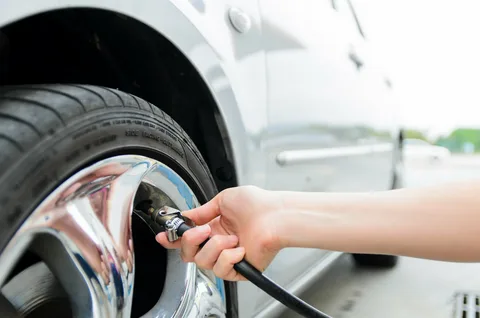
9. “Tyre pressure only matters for long-distance driving.”
Some drivers believe tyre pressure is only important for road trips.
Why this is dangerous:
Even a short daily commute can be risky with incorrect pressure.
Incorrect PSI affects:
- Braking distance
- Fuel consumption
- Steering control
- Tyre life
The truth:
Correct tyre pressure is essential for every trip short or long.
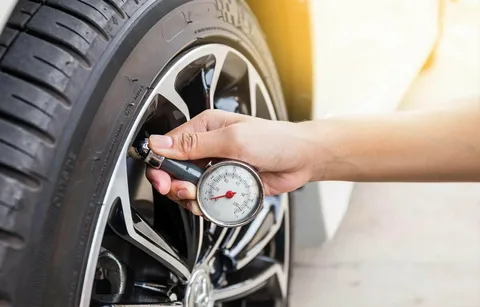
10. “Nitrogen-filled tyres don’t need pressure checks.”
Nitrogen reduces pressure loss over time, but not completely.
Common misunderstanding:
Drivers think nitrogen tyres never need checking.
Reality:
- Nitrogen escapes more slowly, not entirely
- Temperature still affects pressure
- Leaks still happen
- Tyre valves still wear out
The truth:
You still need regular pressure checks even with nitrogen-filled tyres.
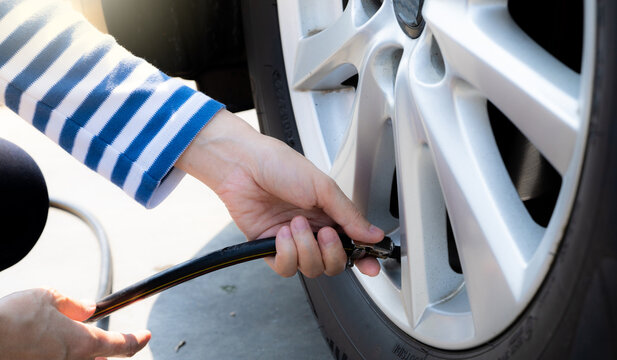
Why Correct Tyre Pressure Matters in the UAE
Maintaining the right PSI is more important here than in many other regions:
- Extreme heat increases risk of blowouts
- Roads are high-speed, requiring stable grip
- Daily temperature variation affects pressure
- Long-distance commuting is common
- Heavy SUVs and 4x4s are widely used
Incorrect pressure can turn into an expensive or dangerous problem quickly.
How to Maintain Tyre Pressure the Right Way
Here are simple methods to avoid mistakes:
- Check pressure every two to three weeks. Preferably early morning when the tyres are cold.
- Follow the car manufacturer’s PSI. Not the number printed on the tyre.
- Use a digital pressure gauge. They are more accurate than analogue meters.
- Check the spare tyre too. Most drivers forget it, and it loses pressure faster.
- Inspect tyres before long drives. Especially trips between emirates.
- Avoid overloading the vehicle. Heavier load requires higher tyre pressure.
Final Thoughts
Tyre pressure may seem like a small detail, but it plays a major role in your car’s safety, handling, and running cost. Many misconceptions spread because they sound logical, but they can actually do more harm than good, especially in UAE conditions where heat, speed, and long-distance driving amplify risks.
By clearing up these myths and relying on proper tyre care, you protect your vehicle, save money, and make every journey safer.

